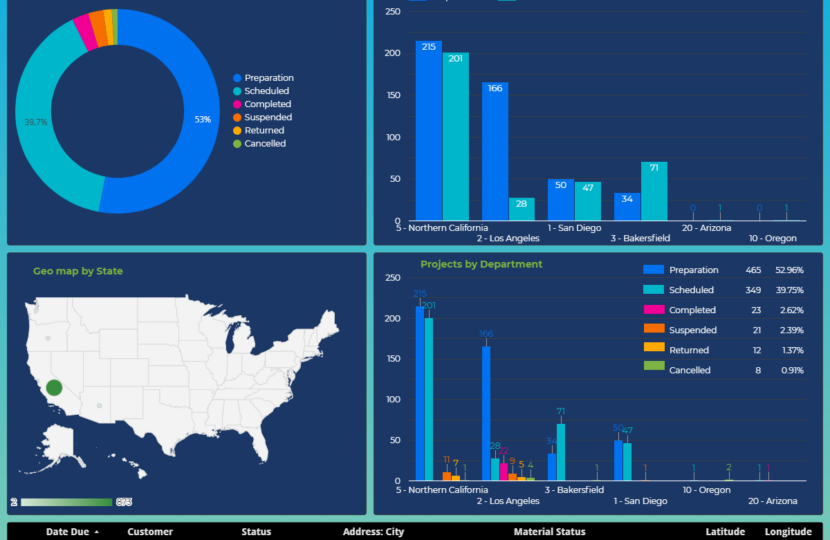A thorough evaluation process is essential when choosing software for a large organization. Here’s a comprehensive list of considerations to examine before purchasing:
Functional Requirements
☑ Core Features: Ensure the software meets the essential functional requirements for your organization.
☑ Customization: Determine if the software allows customization to align with specific business processes.
☑ Scalability: Assess if it can handle growth in terms of users, file storage, and data as your organization expands.
☑ Ease of Use: Confirm that the software has an intuitive interface and minimal learning curve for all types of users.
☑ Compatibility: Evaluate how well it integrates with existing systems, tools, and databases already in place.
Technical Requirements
☑ System Requirements: Check if your current infrastructure meets the software’s technical requirements (devices, operating systems, add-ons, etc.).
☑ Deployment Options: Decide whether a cloud-based or on-premise solution is best. Consider data security needs, control, and budget.
☑ Performance and Reliability: Investigate known performance issues, downtime statistics, and if it can support high-availability needs.
☑ Scalability of Infrastructure: Understand if the software’s infrastructure will support growth, both in terms of users and data volume.
☑ Disaster Recovery and Backup: Ensure the software supports data backup, restoration, and disaster recovery in case of system failures.
Security and Compliance
☑ Data Protection and Privacy: Confirm how the software handles data privacy and what data protection measures are in place.
☑ User Authentication and Authorization: Ensure it supports secure login mechanisms (e.g., multi-factor authentication) and role-based access controls.
☑ Compliance with Regulations: Verify if the software complies with necessary regulatory standards (e.g., HIPAA, etc.) relevant to your industry.
☑ Audit Trails: Ensure it provides logging and auditing capabilities to monitor activities and meet compliance requirements.
Total Cost of Ownership (TCO)
☑ Licensing Model: Understand the pricing model (e.g., per user, per feature, or subscription-based) and how it will impact your budget over time.
☑ Hidden Costs: Consider extra expenses like setup fees, customization, integrations, training, and maintenance.
☑ Support and Maintenance Costs: Include ongoing support, maintenance, and possible upgrade costs in financial analysis.
☑ Hardware/Infrastructure Costs: Determine if new hardware or infrastructure changes are necessary.
Vendor Reputation and Support
☑ Vendor Stability and Reliability: Research the vendor’s reputation, financial stability, and how long they’ve been in business.
☑ Customer Reviews: Look for case studies or testimonials from similar organizations to get an idea of user satisfaction.
☑ Support Options: Evaluate the vendor’s support options (24/7 support, dedicated account managers, escalation process) and the quality of service.
☑ Community: Check if there’s an active user community, forums, or knowledge base for troubleshooting common issues.
Implementation and Integration
☑ Implementation Timeline: Get an estimated timeline for deployment, including any testing, training, and pilot periods.
☑ Ease of Integration: Confirm that it integrates with your existing tools, software, and data sources without needing extensive modifications.
☑ Migration of Existing Data: Assess the complexity of migrating data from your existing systems.
☑ APIs: If you need custom integrations, confirm if the software provides APIs or supports extensibility for seamless integration.
Usability
☑ User Training: Determine if the vendor provides training materials.
☑ Onboarding: Evaluate how easy it is to onboard new users to the platform and how much initial support will be needed.
☑ Help Resources: Confirm the availability of thorough documentation, resources, and knowledge bases.
☑ Change Management: Consider any cultural or operational adjustments required to adopt the new software smoothly.
Reporting
☑ Data Reporting: Verify that the software has robust reporting tools to track key performance metrics.
☑ Custom Reports: Check if custom reports can be created, automated, and shared as needed.
☑ Data Exports: Make sure data can be exported in formats that can be used across other applications or reporting tools such as Excel.
Future Roadmap
☑ Update Frequency: Understand how often updates are rolled out and how disruptive they are to operations.
☑ Roadmap: Ask the vendor for their product roadmap to see if planned updates align with your organization’s future needs.
☑ Backward Compatibility: Make sure that any updates won’t disrupt integrations or customizations in the current setup.
☑ Downtime: Clarify if there’s expected downtime during upgrades and if it impacts regular operations.
Pilot Program and Testing
☑ Trial or Demo: Request a trial period or demo to test the software with a small group of users.
☑ Proof of Concept: Run a POC to ensure that the software meets critical needs and performs as expected in your environment.
☑ Performance Benchmarks: Test the software under simulated workload conditions to ensure it performs adequately under anticipated load or constraints. Use a few of the most complicated situations as a test to see if the system “breaks”.
User Feedback and Satisfaction
☑ Solicit Feedback: Get input from potential users across different departments to ensure all needs are met.
☑ User Satisfaction: Plan regular satisfaction check-ins to monitor adoption and address any issues quickly.
Exit Strategy
☑ Data Ownership and Export: Confirm that your organization retains ownership of the data and can export it if needed.
☑ Vendor Lock-In: Understand the potential for vendor lock-in and what’s involved if you decide to move to a different solution in the future.
☑ Contract Termination: Review contract termination terms, including any fees or penalties, in case the software no longer meets your needs.
Evaluating each of these factors in detail will help ensure that the software you select provides long-term value.

